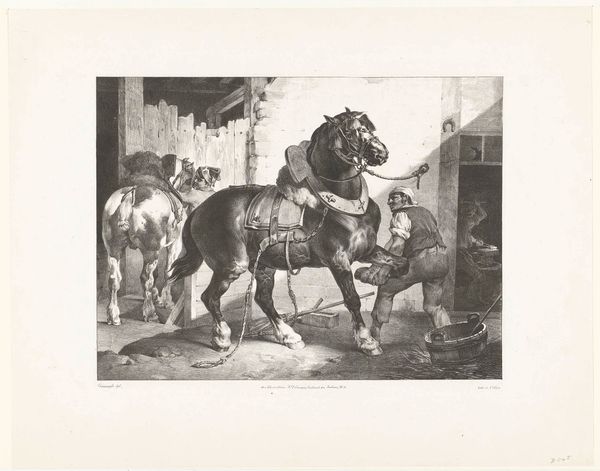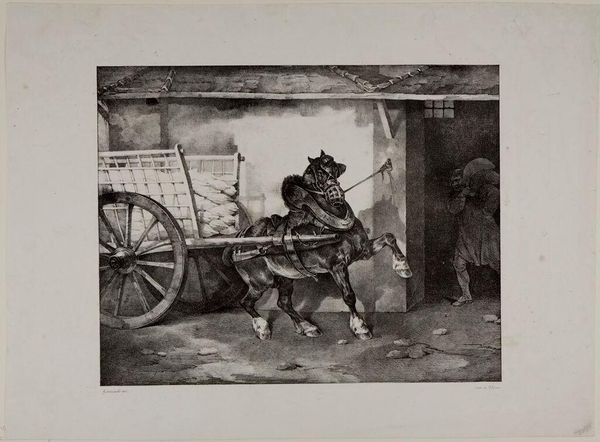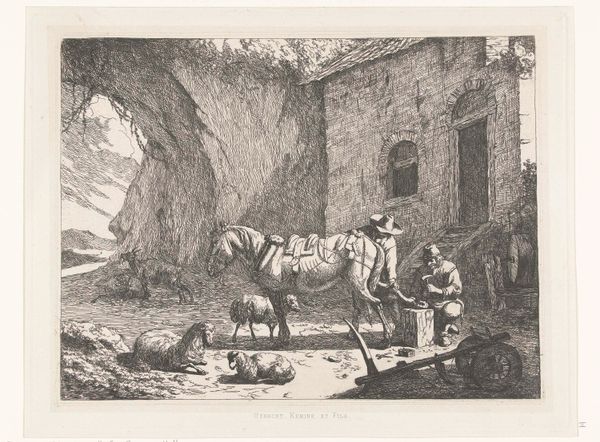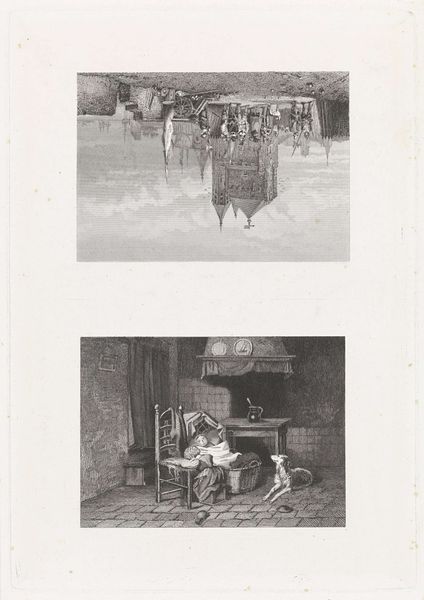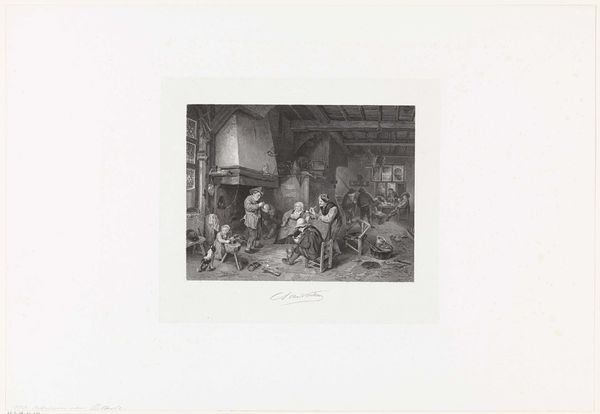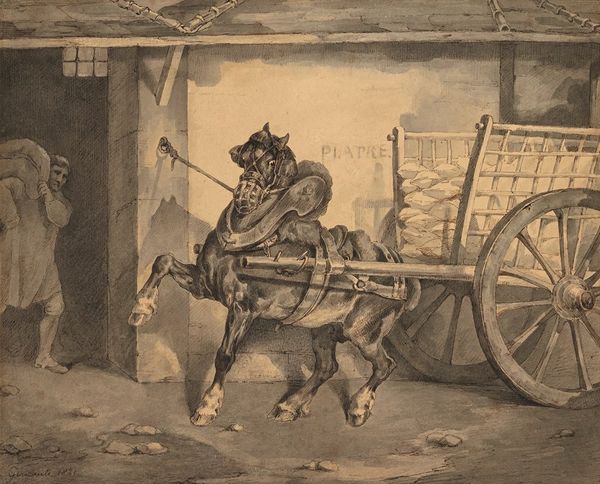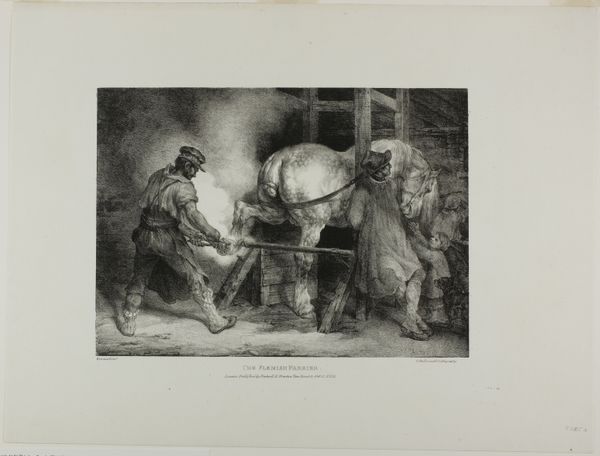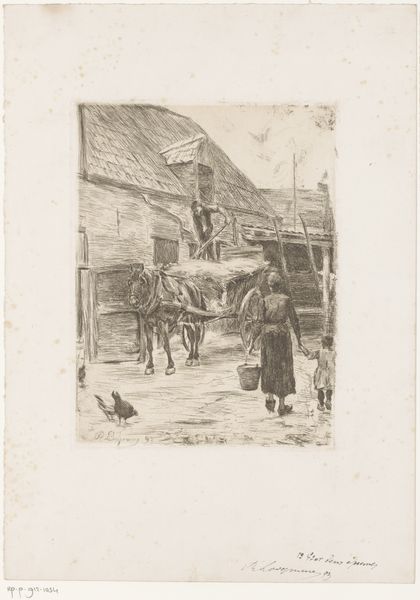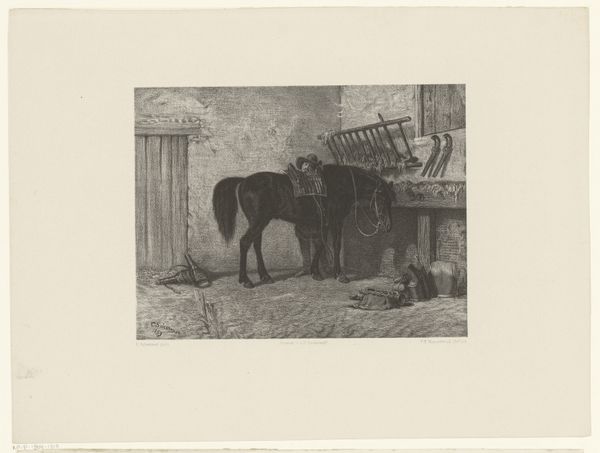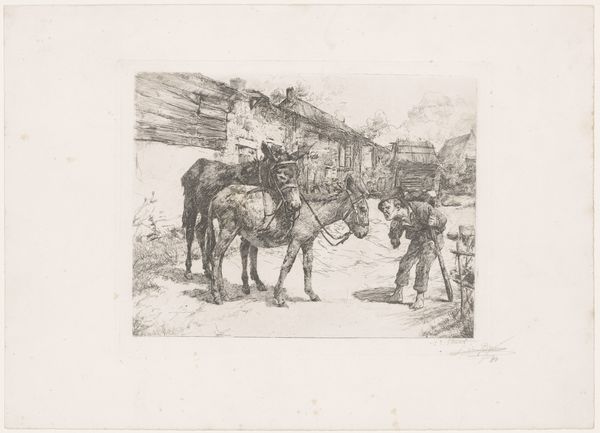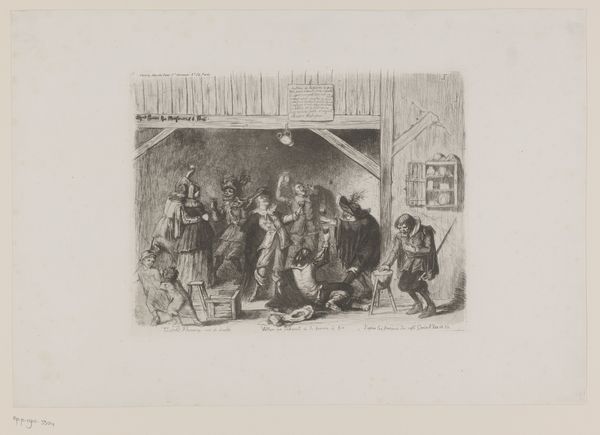
drawing, print
#
drawing
# print
#
landscape
#
figuration
#
romanticism
Dimensions: height 256 mm, width 321 mm, height 376 mm, width 489 mm
Copyright: Rijks Museum: Open Domain
Théodore Géricault made this lithograph, "Het paard van de stukadoor", which translates as "The Plasterer's Horse", in France, around 1821. It depicts a working horse hitched to a cart, suggesting the urban environment of Paris, where the plasterer plied his trade, and new buildings were constantly under construction. Géricault's print offers a fascinating window into the social realities of early 19th-century France. The horse, a vital part of the city's infrastructure, is rendered with remarkable realism, its muscular form and weary stance speaking to the physical demands of labor. We might consider how the artist’s emphasis on the dignity of labor challenged the prevailing class structures of the time. Did it critique the institutions of art that often ignored the lives of working-class citizens? To truly understand this artwork, one might delve into the social and economic history of France during the Restoration period, when artists explored new roles for themselves in a rapidly changing society.
Comments
No comments
Be the first to comment and join the conversation on the ultimate creative platform.
